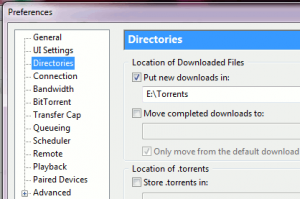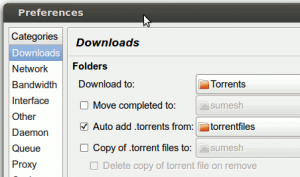I have divided my time almost equally between Windows and Linux (Ubuntu, specifically) the last few months, for coding and development purposes. Sharing data between the two OSes is something that was a priority for me, as I did not want to maintain separate copies of all my files and documents.
My torrent downloads are a priority, since it includes things that I need on both OSes, and downloads might be ongoing as I use the computer by booting into either OSes. I needed to find a way to start downloading torrents on either Windows or Linux, switch to the other OS and resume this torrent seamlessly, and go back and forth as necessary.
Shared partition or hard drive
The best way to do this is to place all your shared files in a common partition, or preferrably a hard drive. The partition should be formatted such that both OSes can access it – that means NTFS or FAT32. Older versions of Linux had issues with NTFS format, but that is no longer the case, so you can use NTFS to maximise Windows compatibility and ensure you don’t run into FAT 32 file size limits.
To ensure that the partition or hard disk is available at system startup on Linux, you might have to configure it. For example, on Ubuntu, I added a line to the fstab file for auto mounting the disk. This varies by operating system, look up how to do this for your Linux flavor.
Setting up torrent clients on Windows, Linux
The most crucial piece of this puzzle is setting up the torrent client just right so that you can resume downloads with minimal fuzz. I use uTorrent on Windows and Deluge on Ubuntu Linux. Your torrent apps may differ, but the basic setup remains the same, so you can replicate this with any other torrent downloader, like the official BitTorrent client, Azure, qTorrent, Transmission etc.

uTorrent appends !utorrent to the file names, when it has not completed a download. This can cause problems with other clients, so disable this from uTorrent settings. If you use a different app, make sure it doesn’t modify file names either.
For both torrent clients, set the same download folder on the same shared partition.

Most torrent clients have settings to monitor a particular folder for .torrent files. As they find .torrent files, the torrent is added to the client and starts downloading. Take advantage of this on both OSes to auto-add torrents. Of course, this means that you cannot use magnetic links to start downloads. This is a small sacrifice for the convenience, of course.